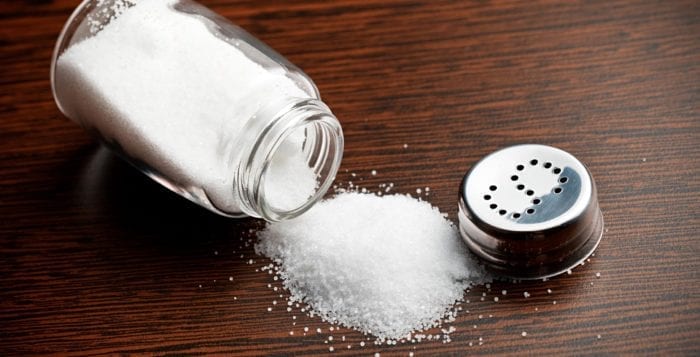By David Dunaief, M.D.

A common question in my practice revolves around soy. Should you consumed or avoid it, especially for women who have breast cancer risk factors? It is a valid question, and the medical research has begun to debunk the myth that soy is detrimental. The form of soy is important; soy from food seems to be safe, but soy in high supplement form has shown mixed results.
Why are patients worried? Soy contains phytoestrogens (plant estrogens). The thought is that phytoestrogens have similar effects as estrogen produced by humans or other animals. However, the story is complex: soy may actually help prevent breast cancer and its recurrence. It may also have other positive health effects. In some cellular and animal studies, high doses of isoflavones or isolated soy protein stimulate cancer growth (1).
Further research shows that these findings don’t translate to humans, most likely because humans metabolize these differently.
Breast Cancer
The Shanghai Breast Cancer Survival Study, an over 5,000 patient observational trial that followed patients for a median of 3.9 years, has had resounding effects on the way we think of soy in relation to breast cancer. The population consisted of women who had already had one occurrence of breast cancer that was in remission. The women who consumed the most soy from food, measured as soy isoflavones or soy proteins, had a 32 percent reduction in a second occurrence of breast cancer and a 29 percent reduction in breast cancer mortality, compared to those who consumed the least (2).
This inverse relationship was seen in both estrogen receptor-positive and estrogen receptor-negative women. It is more difficult to treat estrogen receptor-negative women; therefore, making these results even more impressive.
One prospective study followed over 6,000 women in the U.S. and Canada. It found that women who ate the highest amounts of soy isoflavones had a 21 percent lower risk of death compared with women with the lowest intakes (3). The Shanghai Women’s Health Study followed 73,223 Chinese women for more than 7 years and was the largest study of soy and breast cancer risk in a population with high soy consumption (4). It found that women who ate the most soy had a 59 percent lower risk of premenopausal breast cancer compared with those who ate the lowest amounts of soy. There was no association with postmenopausal breast cancer.
The study authors published a follow-up analysis from the same cohort seven years later to evaluate any association between soy foods and specific types of breast cancer, breaking out the results by type (5). In all cases, risk was lower with higher soy intakes.
Menopause
Soy and soy isoflavones may help improve cognitive function in postmenopausal women. This effect was seen only in women who increased their soy intake before age 65. There may be a “critical window” of therapeutic opportunity in early stages of post-menopause where soy has the greatest impact on cognitive function (6).
Soy is not the food with the greatest phytoestrogens, flaxseed is. In a randomized control trial, a daily flaxseed bar did no better at reducing vasomotor symptoms in postmenopausal women, such as hot flashes, than a fiber placebo bar. This took the study’s authors by surprise; preliminary studies had suggested the opposite (7). Reinforcing these results, another randomized controlled trial failed to show any beneficial effect of soy isoflavones on menopausal symptoms or on preventing bone loss (8).
Lung Cancer
Soy isoflavones help to boost the effect of radiation on cancer cells by blocking DNA repair in these cells (9). They also protect surrounding healthy cells with an antioxidant effect. Soybeans contain three powerful components, genistein, daidzein and glycitein, that provide this effect. Pretreating lung cancer patients may promote better outcomes.
The risk of lung cancer was also shown to be reduced 23 percent in one meta-analysis of 11 trials (10). In subset data, when analysis was restricted to the five highest quality studies, there was an even greater reduction: 30 percent.
Cholesterol Levels
Soy may have modest effects in reducing cholesterol levels. Interestingly, people who convert a soy enzyme to a substance called equol, an estrogen-like compound, during digestion were considered the only ones to benefit; however, one study showed that equol non-producers also benefited with a reduction in LDL “bad” cholesterol (11). The equol producers maintained their HDL “good” cholesterol whereas the non-producers saw a decline.
What does all of this tell us? Soy is most likely beneficial for men and women alike, even in those with a risk of breast cancer. It does not mean we should eat a soy-based diet, but rather have soy in moderation – on a daily basis, perhaps. It is best to eat whole soy, not soy isolates. Also, soy supplements are not the same as foods that contain soy, so it is best to consume soy in food form.
References:
(1) Cancer Research. 2001 Jul 1;61(13):5045-50. (2) JAMA. 2009;302(22):2437-2443. (3) Cancer. 2017 Jun 1;123(11):2070-9. (4) Am J Clin Nutr. 2009 Apr 29;89(6):1920-6. (5) Int J of Cancer. 2016 Aug 15;139(4):742-8. (6) Obstet Gynecol. 2011;18:732-753. (7) Menopause. 2012 Jan;19(1):48-53. (8) Arch Intern Med. 2011;171:1363-1369. (9) J Thorac Oncol. 6(4):688-698, April 2011. (10) Am J Clin Nutr. 2011 Dec;94(6):1575-83. (11) Am J Clin Nutr. March 2012 vol. 95 no. 3 564-571.
Dr. David Dunaief is a speaker, author and local lifestyle medicine physician focusing on the integration of medicine, nutrition, fitness and stress management. For further information, visit www.medicalcompassmd.com or consult your personal physician.














